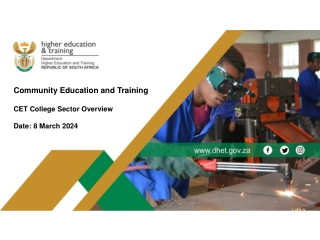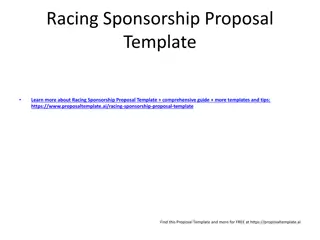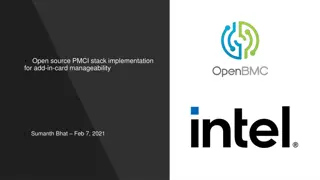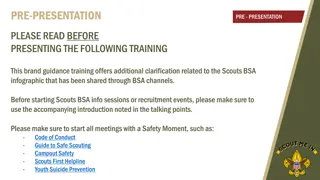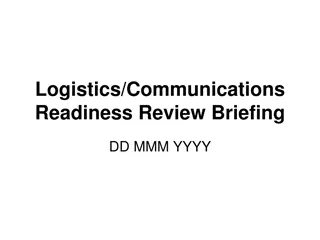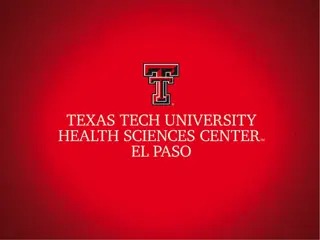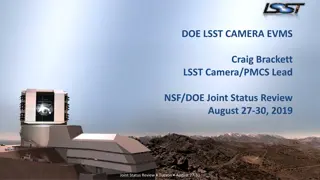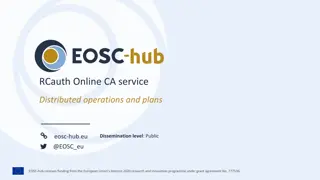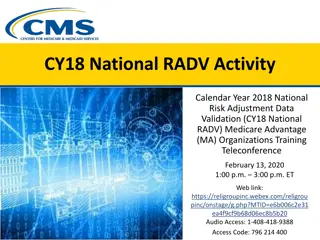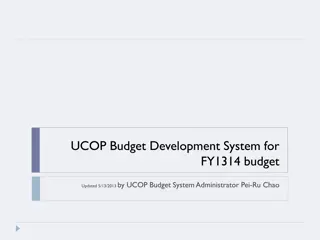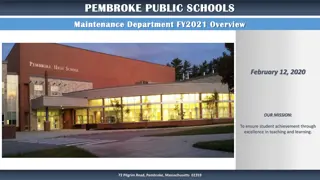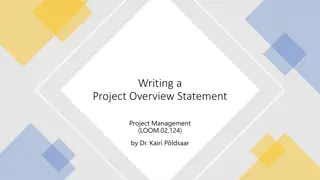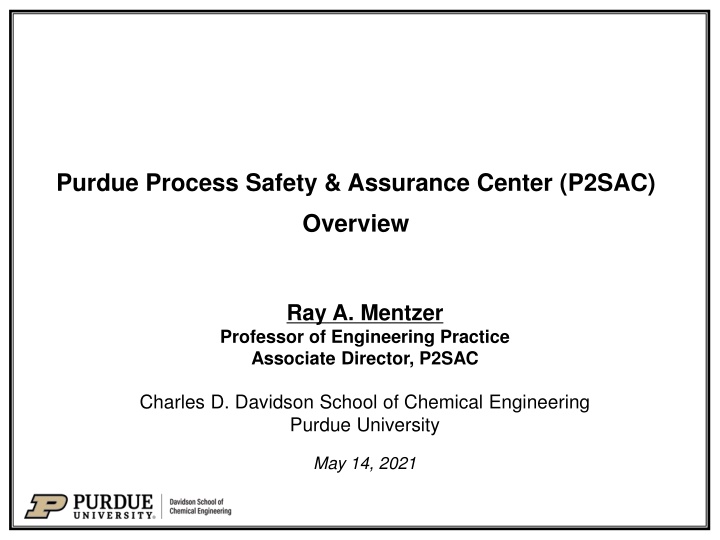
Industry Participation and Research at Purdue Process Safety Center
Explore the involvement of various industries and academic research levels at Purdue Process Safety & Assurance Center (P2SAC). Learn about core classes, metrics, regulations, safety protocols, and ongoing research projects related to chemical process safety. Discover how industry leaders like Evonik, ExxonMobil, Gilead, and others collaborate with P2SAC for enhancing safety practices and innovation in the field.
Download Presentation

Please find below an Image/Link to download the presentation.
The content on the website is provided AS IS for your information and personal use only. It may not be sold, licensed, or shared on other websites without obtaining consent from the author. If you encounter any issues during the download, it is possible that the publisher has removed the file from their server.
You are allowed to download the files provided on this website for personal or commercial use, subject to the condition that they are used lawfully. All files are the property of their respective owners.
The content on the website is provided AS IS for your information and personal use only. It may not be sold, licensed, or shared on other websites without obtaining consent from the author.
E N D
Presentation Transcript
Purdue Process Safety & Assurance Center (P2SAC) Overview Ray A. Mentzer Professor of Engineering Practice Associate Director, P2SAC Charles D. Davidson School of Chemical Engineering Purdue University May 14, 2021
May 2021 Conference Registration Evonik Exponent ExxonMobil Gilead Hikla* IChemE Huntsman* Johnson Matthey Langan Eng Mettler Toledo Occidental Promega Corp* PSRG Scale-Up Systems SGGS, IET* (India) Smith Burgess Spark Cognition* Tate & Lyle Vertex Guests ABS aeSolutions Air Products AstraZeneca Bechtel Boehringer Ingelheim* Cadila Carnegie Mellon* CatSci Ltd* CCPS CDC - NIOSH Celanese Cenovus* Chemours* Cook Cummins DEKRA DNV* Dr Reddys* Sponsors ACC Am Chem Council AcuTech AMGEN BP Chevron Corteva CountryMark Dow Endress+Hauser Fauske & Associates GSK Honeywell Kenexis Lilly Marsh Risk Merck Phillips 66 Pfizer SABIC 3M *denotes 1st meeting On-going dialog with other Depts: ABE, CHEM, IE, IPPH & ME
Chemical Process Safety - Core Class Process Safety Metrics Personnel vs. Process Safety & Metrics Applicable regulations: OSHA PSM, EPA RMP, etc Source Term Modeling Toxicants & Industrial Hygiene Toxic/Flammable Gas Release Dispersion Modeling Fire & Explosion Protection Chemical Reactivity Relief System Design Hazards Identification (HAZOP, ..) Risk Assessment (Matrix, QRA, ..) Accident Investigations LOPA Frequencies Typical 4x4 Risk Matrix HAZOP 5
P2SAC Related PMP Research 2020 / 2021 AcuTech - Real World Application of Artificial Intelligence and Machine Learning in Process Safety AMGEN - Thermal Hazards in the Pharmaceutical Industry & continued in 21 BP - Safety Protection System Analysis / Common Cause Failures Chevron - Safe Disposal of Drilling Fluids From High Temperature & Pressure Wells - Drilling & Completions Fluids Management Dow - Heat Transfer Model for Accelerating Rate Calorimeter - Assessing efficacy of indirect contact water spray in arresting thermal runaway inside vessels Fauske - Refine the Design of a Benchtop Prototype Device for Chemical Reactivity Screening - Designing an Emergency Relief System for Vessels Containing Materials with Known and Unknown Decomposition Kinetics Marsh - The Role of Shift Handover in Achieving Positive Process Safety Outcomes Merck - Using experimental data to assess thermal hazards in pipes to protect flow reactors Phillips 66 - Dispersion of H2S & NH3 from releases of sour water & rich amine treating solvent Vertex (w / Amgen, Corteva, GSK, JP, Lilly, Merck) - Experimental vs. predicted heats of reaction for some common reaction types in pharma industry & comparison with predictions 3M - Modeling Indoor Release of Hazardous Chemicals *Participated other years: Dow AgroSciences, ExxonMobil, Kenexis, Lilly, Shell
P2SAC 5-year Plan Survey 1. Describe your current experience with P2SAC. What have been the most valuable contributions to you, your company or industry? excellent conference content & discussions; more connected feel than other conferences network & learn best practices from others and unique opportunity to benchmark & learn from other industries eg, heat of rxn collaboration opportunity to influence other cos who have fewer process safety resources / experience, particularly on fundamental science applicability of P2SAC research to industry UG & PMP resource for project research important to cos and provides student development opportunity 2. How could your experience with P2SAC be improved? pursue more projects; more industry collaborations overall preference for F2F, while virtual conferences expand attendance annual PhD funding cycle to more frequently engage R&D arm of company; perhaps stagger cycle (half projects / yr) improvements to process for assigning / onboarding PMP students strict time limit on conference presentations
P2SAC 5-year Plan Survey (2) 3. What do you think are currently the most pressing process safety challenges in your company? lab scale hazards and dust explosivity lack of trained resources design vs. actual performance of protection layers dispersion modeling, CFD, AI and machine learning to improve PHAs understanding process safety aspects of flow chemistry early phase hazard evaluation with limited material for testing future handling of renewable feedstocks tool to assess company s organizational health 4. What do you think are currently the most pressing process safety challenges in your industry or beyond? aging equipment, retirement of key PS experts, cybersecurity, sustainability effective communication of process safety risks to operators and senior mgmt powder fires & explosions, shift from batch to continuous pharma processing continuation of Amgen / P2SAC work on TMR24 as key safety parameter model thermal hazards with slim data, such as AKTS releases from storage tanks, ASTs (above ground storage tanks) shorter process development time for new chemistry & PS impacts natural disaster events leading to PS incidents (NanTech), process security, process safety culture, domino effects, application in other industries, digitalization
P2SAC 5-year Plan Survey (3) 5. How is P2SAC supporting you in addressing these company & industry process safety challenges? Intercompany dialog, sharing of best practices, publications, research opportunities Providing a forum for companies to network & collaborate Broad range of topics and papers at conferences Helps consulting firms understand potential client needs 6. Looking ahead, how could P2SAC support you in addressing these company & industry process safety challenges? influence ABET to ensure all ChE & Chem pgms have PS training / course continue company engagement activities company sharing of how they are addressing specific PS challenges more use of ARSST so students learn calorimetry & runaway reactions virtual conference options to improve reach / attendance more publicity showcase at GCPS, ? expand engagement to data science colleagues more publications to share research with China, India, et al colleagues
P2SAC 5-year Plan Survey (4) 7. From your perspective, what does the next level look like for P2SAC? What will it require to get there? continue to grow P2SAC; engage CRO / CMO, engage with instrument cos add llaboratory equipment, calorimeters, more student presentations and exposure with cos at conferences add short courses to conferences PSV calcs, flare header hydraulics, 8. What should P2SAC s top priorities be today? continued member company sharing of PS challenges / best practices expand student laboratory work, e.g. - experimental calorimetry, etc continue to promote academic / industrial collaborations reactive chemicals & human factors focus on chemical & pharma industries
P2SAC 5-year Plan Survey (5) 9. What is the best vehicle to disseminate new developments / research (e.g., conferences, publications, website, )? all of the above email with recent publications, milestones more advertising LinkedIn, including sponsor / company sharing newsletter once or twice per yr featuring professors, cos, major incidents 10. Anything else you d like to share? charge non-sponsors a fee to attend conferences have cos give presentations in PS class & other Purdue events PS internships, reverse internship enabling company rep to train students in use of lab instruments ensure email distribution list contains all / appropriate company contacts open up PMP August presentations to all P2SAC sponsors
P2SAC 5-year Plan Survey (6) - TAKEAWAYS - Satisfaction with P2SAC program and conference format Benefit from networking, exposure to best practices, cross co collaborations Desire to continue to grow P2SAC sponsors Direct engagement with UG & PMP students on projects of direct interest to co getting work accomplished and benefiting students education Prefer F2F conferences, but some benefits to virtual with respect to travel Continue to share research via conferences, publications & web-site also consider emails, LinkedIn & periodic newsletter Suggestions to improve PMP mentoring program shared with Director Expand student work in laboratory, use of ARSST, other instrumentation Several company & industry research topics of interest: dust handling & explosivity; modeling of thermal hazards with minimal data; storage tanks; artificial Intelligence, ML & Big Data; cybersecurity; digitalization; natural disaster events; domino events, hazards / risks
Analysis of Root Causes of Process Safety Incidents Across 14 Industries PMP / UG Studied: Refining, Chemicals, Oil & Gas, Storage, Pipeline, Fertilizer, Pharmaceutical, Agriculture, Food, 3 primary incidents per industry Analyzed significant data set in terms of root causes, fatalities, monetary damage, impact beyond plant fence, state of operation, and developed / developing country 81 incidents analyzed; identified14 primary root causes; several per incident Published: Process Safety Progress: e12158 (2020)
Factors Contributing to US Chemical Plant Process Safety Incidents from 2010 2020* Study analyzed the most common contributing factors to PS incidents within the chemical manufacturing sector, and relationship with the most common OSHA citations Focused on NAICS code 325 chemical manufacturing sector cos NAICS Code Chemical Manufacturing 3251 Basic Inorganic and Organic 3252 Plastics, Synthetic Materials 79 Tier-1 incidents from CSB & internal company investigations Incidents analyzed in terms of 18 contributing factors; most common: Rank Contributing Factor 3253 Fertilizer and Pesticide 3254 Pharmaceutical 3255 Paint, Coating, Adhesive 3256 Detergent, Sanitation Score 3259 Other (Ink, Explosives, etc.) Design 6 1 Preventive Maintenance 6 2 Safeguards, Controls & Layers of Protection 5 3 Emergency Preparedness and Response 3 4 Operating Procedures 3 5 Safety Culture 3 6 Also analyzed OSHA citations issued to chemical manufacturing companies and found consistent with contributing factors noted above Most cited OSHA codes: Most Cited OSHA Codes (NAICS Code 325) 1910.119 - Process safety management of hazardous chemicals 1910.134 - Respiratory protection 1910.1200 - Hazard communication Published: J Loss Prevention in Process Ind, 21 * Study funded by the American Chemistry Council and conducted by Purdue and University of Utah 1910.147 - The control of hazardous energy
Recent Student Publications Promoting a Safe Laboratory Environment using the Reactive Hazard Evaluation & Analysis Compilation Tool (RHEACT) , Abhijit D. Talpade, Pushkar Ghanekar, Sopuruchukwu Ezenwa, Ravi Joshi, Samuel Kravitz, Anirudh Tunga, Jayachandran Devaraj, Fabio H. Ribeiro, Ray Mentzer, accepted ACS Journal of Safety & Health, 2021. Global Process Safety Incidents in the Pharmaceutical Industry , Maaz S. Maniar, Apoorv Kumar, Ray A. Mentzer, J of Loss Prevention in the Process Industries, 68, December 2020. Process Safety Incidents Across Fourteen Industries , Anvaya Bhusari, Amous Goh, Huan Ai, Sai Sathanapally, Mehfouz Jalal, and Ray A. Mentzer, Process Safety Progress, April 2020. Review of Failure Trends in the US Natural Gas Pipeline Industry: An In-depth Analysis of Transmission and Distribution System Incidents , C. P. Vetter, L. A. Kuebel, D. Natarajan, R. A. Mentzer, J of Loss Prevention in the Process Industries 60, 2019.
Upcoming Student Presentations as requested! Friday Elizabeth Rosene, Purdue (UG): Organizational health a new methodology and survey for measuring Abhijit Talpade, Purdue (PhD candidate) and David Moore, AcuTech: Analysis of cybersecurity risks of proposed remote CISTAR facilities Xinyu Zhen Purdue (PMP graduate): Safety shower and eyewash systems best practices Monday Caitlin Justice, Purdue (UG): Comparison of computational models and experimental data for some reactions common to pharma industry Pushkar Ghanekar, Purdue (PhD candidate): Promoting a safe laboratory environment using the reactive hazard evaluation and analysis compilation tool (RHEACT)
2020 P2SAC Closing P2SAC continues to grow; averaging over 25 projects / year Minimal COVID impact on progress Companies actively engaged in working with students on research projects they suggested THANK YOU!! ALWAYS interested in your process safety research ideas & projects

![❤[READ]❤ Deep Space Craft: An Overview of Interplanetary Flight (Springer Praxis](/thumb/21511/read-deep-space-craft-an-overview-of-interplanetary-flight-springer-praxis.jpg)
